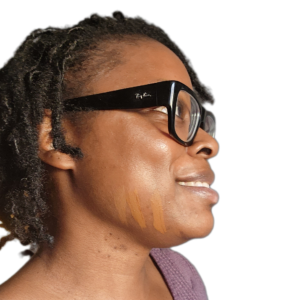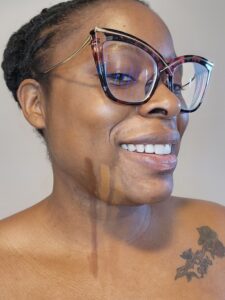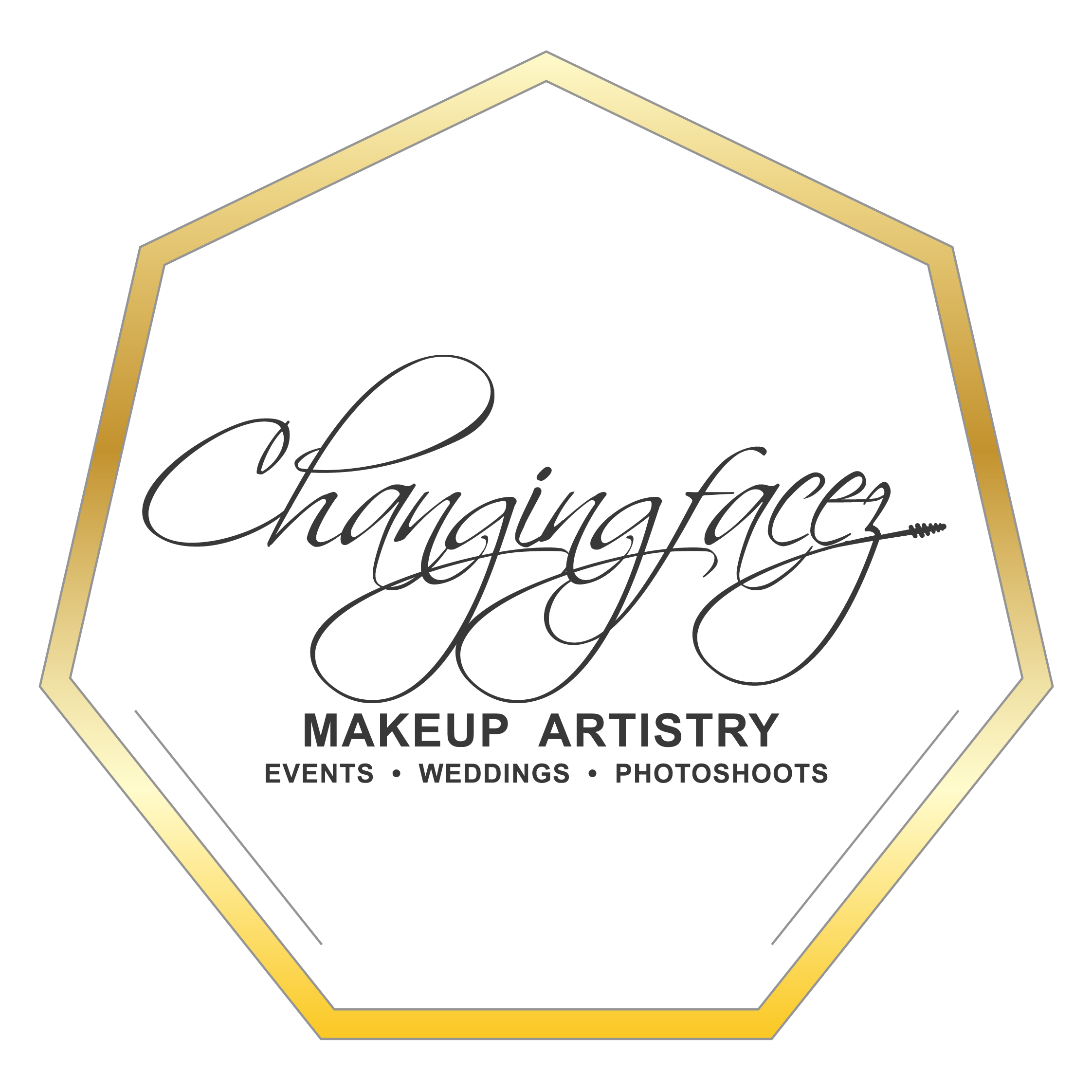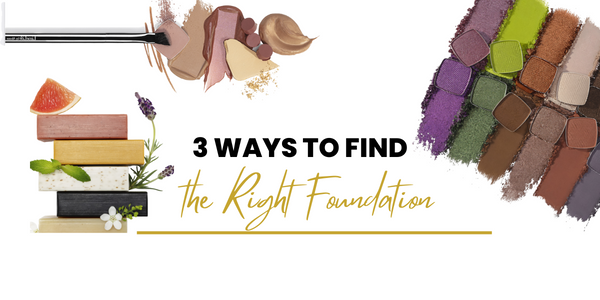What is Foundation?
The first product used in makeup applications in the earlier days was foundation. Nowadays, we choose which order we want to apply makeup that doesn’t necessarily make foundation first. Foundation was given a name for a reason. It provides the “foundation” upon which the whole application is built.
Foundation is a makeup product designed to even out skin tone and mild imperfections. It provides a base for makeup application. Choosing the proper color is critical and depends on the person’s skin tone. Skin tone is the degree of warmth or coolness of the tone of the skin. The correct foundation can enhance the natural skin tone and blend seamlessly from the face down to the jawline, neck, and chest. Selecting the incorrect foundation shade or skin tone can result in your foundation looking lifeless and dull. This is what we, Makeup Artists, call casket sharp!
How To Find The Right Foundation For You
The first thing you want to do is figure out your undertone. To find your undertone, you can try looking at the veins on your wrist. If they appear blue or purple, you may have cool undertones. If they appear green, you may have warm undertones.
The second way is to consider how your skin reacts to the sun. If you tend to burn easily, you may have cool undertones, while if you tan easily, you may have warm undertones.
Thirdly, you can try holding up silver and gold jewelry to your skin to see which one complements your skin better – silver typically looks better on cool undertones, while gold looks better on warm undertones.
Types of Foundation
The type of foundation is a personal preference. The typical types of foundation are liquid, mineral, cream, stick, and mousse. Let’s break down each of these types of foundations.
- Liquid foundation is suited for any skin type. It provides sheer coverage and is what people usually refer to as natural coverage.
- Mineral foundation is great for all skin types. They contain fewer ingredients and are less likely to cause allergic reactions in people with sensitive skin. Mineral foundation can be in the form of liquid or powder.
- Cream foundation can be either water-based or oil-based. It is thicker in consistency than a liquid or mineral, and it provides full coverage with a smooth texture. This formula is good for those with dry, mature, and uneven texture and tone.
- Stick foundation is similar to cream, except it is in a different form. Many “stick” foundations are in a container that reminds you of a large lipstick container. Stick foundations can provide light to heavy coverage and a smooth, silky, matte finish.
- Mousse foundation is a liquid product that comes in either an aerosal or spray can, boosted by air. It reminds me of whipped cream. It’s very soft to the touch, easy to apply, and is great for any skin type. With the right technique, mousse foundation can give you an airbrush finish.
Match Foundation
Matching a foundation to a skin tone takes practice and time. Hopefully, I can explain this process in a way in which you understand. First, we will discuss two matching techniques.
Matching Technique #1:
First, choose 2-3 shades and apply a 2-inch line from the lower cheek down the jawline. View from various angles to determine which shade blends the face to the neck. In this picture, you can see I started from the lower part of my cheek, going to the jawline. Depending on how many tones you have in your skin will determine how far up or down you start on the cheek.

Matching Technique #2:
First, choose a foundation color that matches not only the face and neck but also the chest. Choose 2-3 shades and apply a 2-inch line from the lower cheek down the jawline and onto the chest. Additionally, the chest is sometimes darker than the face; therefore, choose a slightly darker shade of foundation so the entire face, neck, and chest blend beautifully.

If you need more assistance with matching, take this FOUNDATION QUIZ






